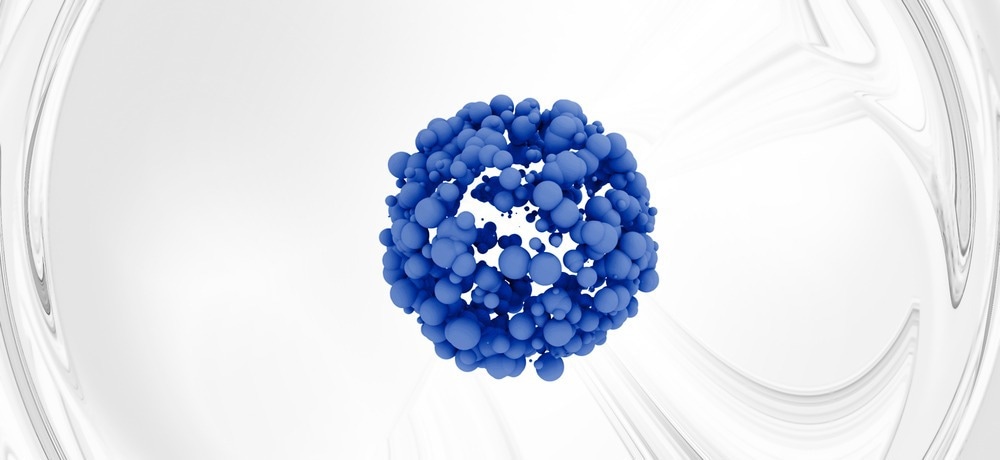In this article, the historical and future trends in the production and use of nanobiomaterials will be discussed.

Image Credit: GiroScience/Shutterstock.com
Nanobiomaterials are nanoscale objects intended for biotechnology applications. Humans have reportedly utilized metal and metal oxide nanoparticle colloids for thousands of years for dubious medical purposes.
Renewed interest in nanotechnology occurred during the 20th century with the advent of the reliable synthesis of monodisperse nanoparticles of various materials by bottom-up chemical methods. Since then, nanotechnology has been explored for applications in medicine as drug delivery vehicles, diagnostic agents, and tailored multifunctional theranostic platforms.
The History of Nanomaterial Manufacturing
Nanoparticles constructed from plasmonic materials such as silver and gold exhibit unique optical properties not observed at the bulk scale. These nanoparticles strongly absorb light at a specific wavelength due to a phenomenon known as localized surface plasmon resonance (LSPR).
LSPR occurs due to the in-phase resonance of conduction band electrons belonging to the nanomaterial with incident light, and has historically been exploited in the creation of colored glass.
One particularly ancient example is the Lycurgus cup, an object of Roman origin currently on display in the British Museum. It contains a mixture of large silver and smaller gold nanoparticles, producing a greenish color when illuminated from the front due to light scattering, and a red hue when lighted from the back owing to the adsorption of light by the gold nanoparticles.
A variety of metallic nanoparticles were used regularly in the manufacture of colored glass and ceramics from the 6th century onwards in various regions of the world, often produced in specific shape and size to tailor the inherent optical properties of the particle, though before the development of electron microscopes in the 1930’s and 40’s this could not be known.
In 1857, Michael Faraday stated “there is plenty of room at the bottom” regarding the development of nanomaterials, sparking renewed interest in their synthesis and characterization by demonstrating the unique optical properties of gold nanoparticles.
While the high energy electrons of electron microscopes are ideal for imaging high-density materials such as gold nanoparticles, lower-density nanomaterials such as carbon nanotubes are rendered invisible to them, passing through them without interaction.
During the 1980’s the first scanning tunneling and atomic force microscopes were developed, which operate by passing a very fine needle over the material and measuring the minute attractive and repulsive interactions with the surface, indicating surface morphology in extremely precise detail.
The development of this technology allowed the realization that carbon structures, such as fullerenes or nanotubes, exist at the nanoscale, along with a plethora of other nanostructures of other materials that could now be characterized in detail.
How Are Nanoparticles Used in Biotechnology?
The inherent optical properties of particular metallic nanomaterials lend functionality as indicators and diagnostic agents, and many are already widely exploited in several biotechnological applications.
For example, the colorimetric line indicator found on many lateral-flow tests for pregnancy or infection frequently contains gold nanoparticles that aggregate in the presence of the positive biomarker, owing to coating with antibodies compatible with the antigen, or the hormone in the case of pregnancy tests, producing a color change in the visible spectrum.
This same concept is the basis for many types of bioassays in biotechnology; an array of nanoparticles coated with a range of antibodies are exposed to an unknown antigen, allowing those with the best compatibility to be identified.
Nanoparticles can be coated with a wide variety of functional ligands that facilitate a specific purpose in a therapeutic or diagnostic context, providing an active targeting mechanism when loaded with antibodies or other biomolecules such as DNA. Nanoparticles are then able to preferentially accumulate within tissues and cells expressing the target antigen or other target molecule, potentially simultaneously delivering a drug or alternative therapeutic cargo, such as proteins or mRNA.
This tactic is under heavy exploration in the field of cancer research, as cancer cells frequently over-express one or more specific receptors at their cell surface owing to their dysregulated genome. Identifying the protein and glycan structure of these receptors allows the complimentary ligand to be recognized and loaded onto the particle in an example of personalized medicine not yet at the clinical stage.
Magnetic nanoparticles containing ferromagnetic material such as iron oxide have also been explored at several stages of clinical application, where magnetic fields can be exploited to direct the nanoparticles within the body.

Image Credit: Marina Litvinova/Shutterstock.com
How Will Nanobiomaterials Be Used in the Clinic?
Once in position at the site of interest, nanoparticles are capable of acting as powerful diagnostic agents, in particular as X-Ray contrast enhancers in the case of metallic particles. The pervasive nature of nanoparticles, in combination with active targeting mechanisms, allows tumor sites to be identified throughout the body, and nanoparticles generally exhibit greater retention time than small molecule diagnostic and contrast agents.
Some metallic nanoparticles are also able to act as radiation dose enhancers, locally amplifying incident radiation by scattering and absorption interactions that result in electron expulsion. Similarly, radiation adsorption can result in intense but localized tissue heating and significantly enhance the success of photothermal therapies.
While nanoparticles constructed from metals propose the opportunity to exploit a variety of unique and interesting properties, several drawbacks have prevented their complete adoption in the clinic, largely issues surrounding bioaccumulation and the unknown result of long-term exposure.
Metallic nanoparticles tend to accumulate largely in the liver, spleen, and kidneys owing to filtration within the hepatobiliary and renal systems. Those not excreted early tend to linger for long periods. Nanoparticles constructed from materials that are more easily degraded have therefore seen broader adoption, particularly liposomes as utilized within the COVID-19 vaccine in the delivery of sensitive mRNA.
Other sensitive biomolecules, such as DNA and proteins, have been successfully delivered in the lab and clinic using biocompatible liposomes and polymers. These molecules generally cross the cell membrane by direct diffusion or by utilizing existing cellular transport mechanisms and are recycled by the cell following the release of their cargo.
The wide-scale success of COVID-19 mRNA vaccines has spurred the further exploration and optimization of this technology, and liposomes and similar nanomaterials will increasingly see clinical use in the delivery of other sensitive materials to intracellular compartments, exploiting active targeting functionality to selectively deliver cargo to the required cells.
The CRISPR-CAS9 apparatus utilized in genetic engineering is one such example of highly sensitive biomaterial that would degrade during circulation if injected without protection. Thus nanoparticle delivery vehicles are important for ultimate application for in vivo subjects.
References and Further Reading
Yang, L., Zhang, L., & Webster, T. J. (2011). Nanobiomaterials: State of the Art and Future Trends. Advanced Engineering Materials, 13(6), pp. B197–B217. https://doi.org/10.1002/adem.201080140
Bayda, S., Adeel, M., Tuccinardi, T., Cordani, M., & Rizzolio, F. (2019). The History of Nanoscience and Nanotechnology: From Chemical–Physical Applications to Nanomedicine. Molecules, 25(1), p. 112. https://doi.org/10.3390/molecules25010112
Anselmo, A. C., & Mitragotri, S. (2019). Nanoparticles in the clinic: An update. Bioengineering & Translational Medicine, 4(3). https://doi.org/10.1002/btm2.10143
Disclaimer: The views expressed here are those of the author expressed in their private capacity and do not necessarily represent the views of AZoM.com Limited T/A AZoNetwork the owner and operator of this website. This disclaimer forms part of the Terms and conditions of use of this website.